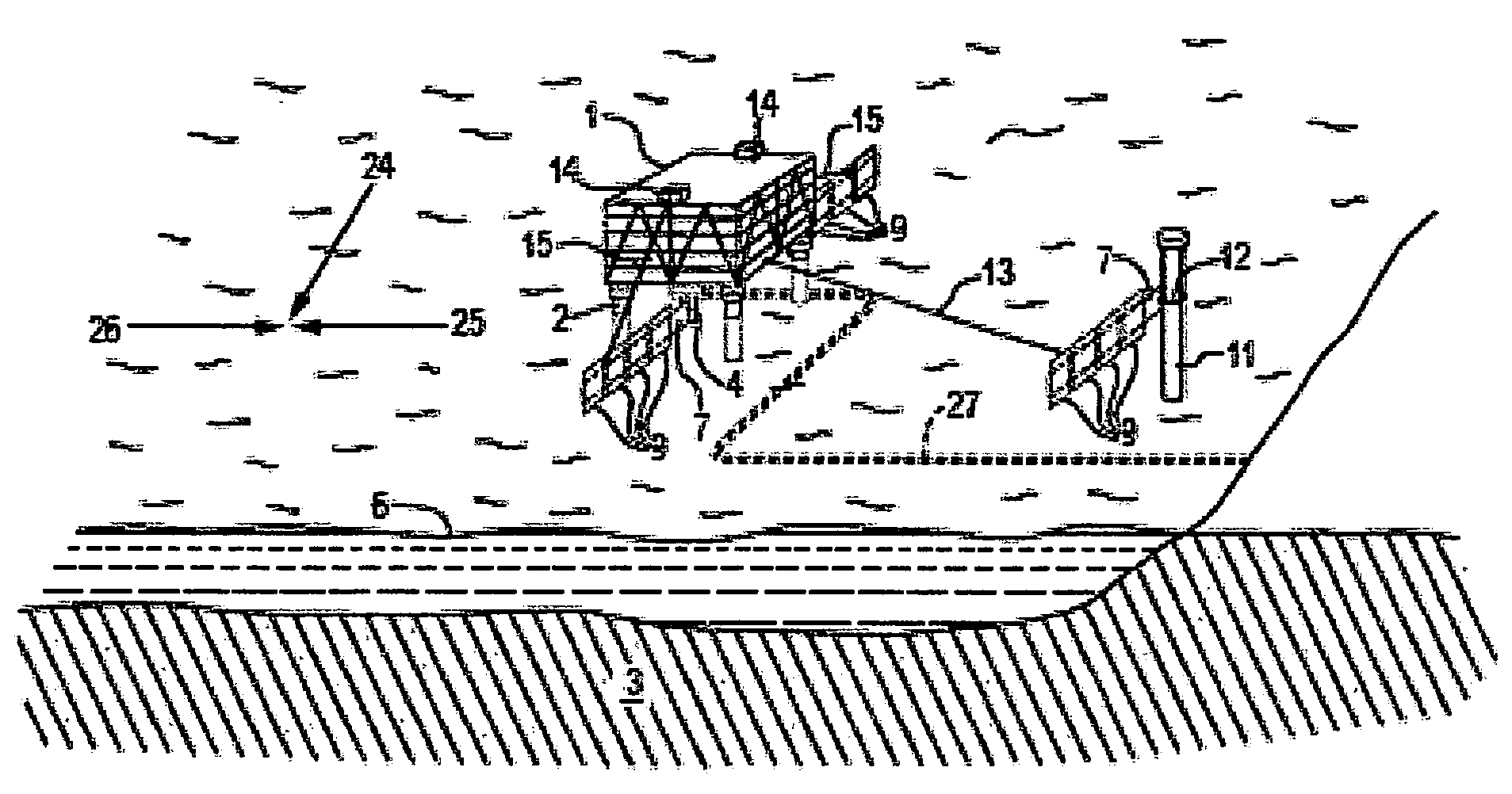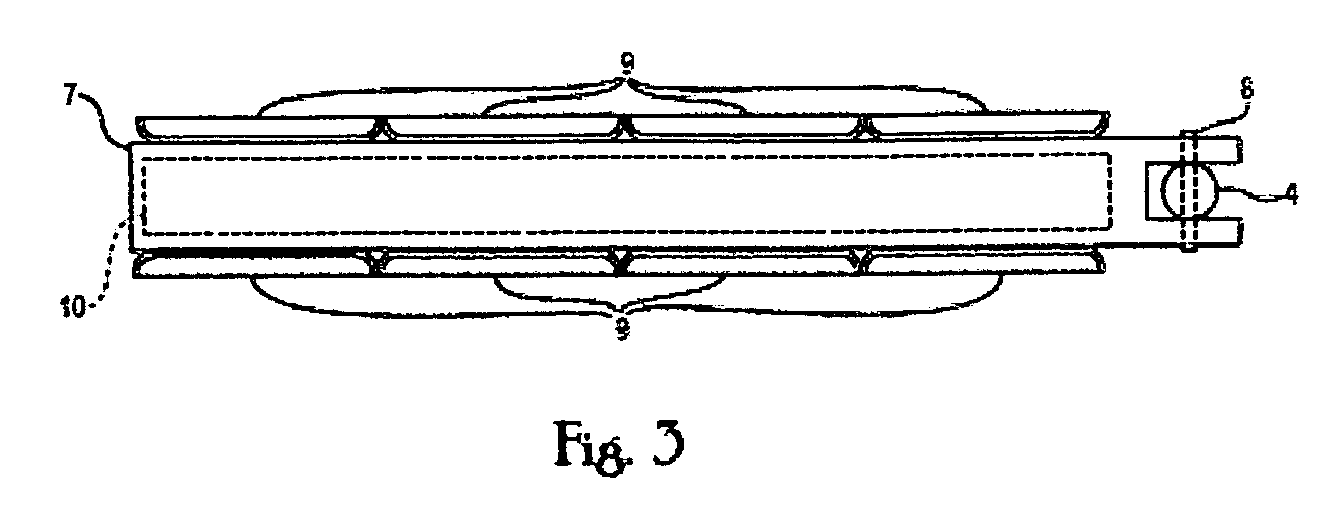Ocean energy harvesting system
a technology of ocean energy and energy harvesting, applied in the direction of mechanical equipment, machines/engines, electric generator control, etc., can solve the problems of large installation and operating costs, large complexity, and inability to meet the needs of large-scale operation, so as to improve system performance, minimize time and cost, and operate efficiently
- Summary
- Abstract
- Description
- Claims
- Application Information
AI Technical Summary
Benefits of technology
Problems solved by technology
Method used
Image
Examples
Embodiment Construction
[0066]Referring now to the drawings in greater detail, FIG. 1 shows the wave energy harvesting system of the present invention that involves placing a generator platform 1 near or above the ocean environment using generator platform supports 2 that are either embedded or anchored to the ocean floor 3. The generator platform 1 has a rotational shaft 4 mounted inside using rotational shaft bearings 5. The rotational shaft 4 extends below the floor of the generator platform 1 and down below the water level 6 at low tide. Attached to the rotational shafts 4 are structural members 7 that extend from underneath the generator platform 1 a significant distance into the ocean wave environment. Momentum absorbers 9 are attached to the structural members 7 and create a large cross-section for harvesting wave and current energy. Flotation material 10 is embedded inside the structural members 7 to keep the structural members floating on the water level 6, with the momentum absorbers 9 extending ...
PUM
 Login to view more
Login to view more Abstract
Description
Claims
Application Information
 Login to view more
Login to view more - R&D Engineer
- R&D Manager
- IP Professional
- Industry Leading Data Capabilities
- Powerful AI technology
- Patent DNA Extraction
Browse by: Latest US Patents, China's latest patents, Technical Efficacy Thesaurus, Application Domain, Technology Topic.
© 2024 PatSnap. All rights reserved.Legal|Privacy policy|Modern Slavery Act Transparency Statement|Sitemap



